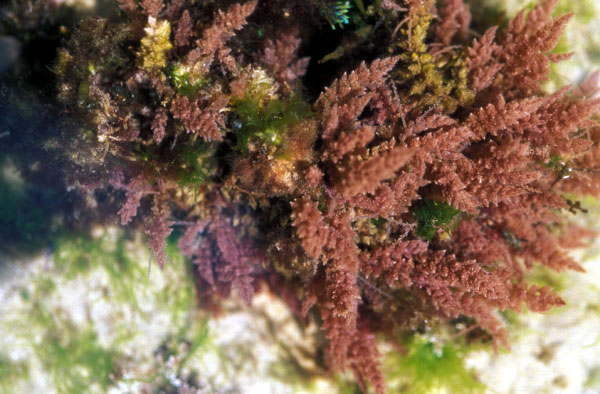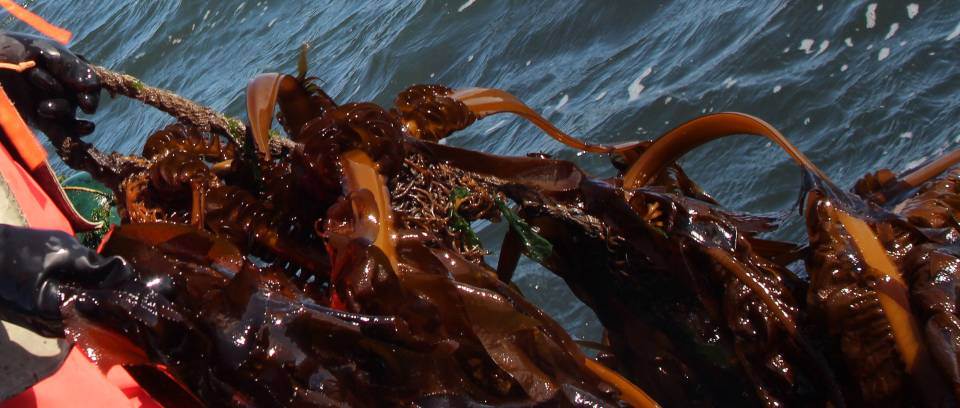In this Special Issue of Asian Fisheries Science, we are pleased to present 21 papers that resulted from the 48 presentations and posters of the 3rd Global Symposium on Gender in Aquaculture and Fisheries (GAF3), 9th Asian Fisheries and Aquaculture Forum, April 2011. GAF3 was the fifth triennial women/gender Symposium organized by the Asian Fisheries Society.
Digital library
-
-
"Perhaps the single most important lesson to be learned by direct experimentation is that the natural world, with all its elements and interactions, represents a complex system and therefore we cannot understand it and we cannot predict its behavior...
Managers interact with the system: they do something, watch for the response, and then do something else in an effort to get the result they want. There is an endless iterative interaction that acknowledges we don't know for sure what the system will do - we have to wait and see... Interacting with the natural world, we are denied certainty. And always will be." - Dr. Michael C. Crichton, 2008
As of 2013 almost all Kappaphycus and Eucheuma production has been from family farms and almost all production has served as raw material for the manufacture of carrageenan. Production of Kappaphycus has failed to reach levels of supply that adequately meet demand.
Although there will always be a need for major supplies of Kappaphycus and Eucheuma seaweed crops from small-holder operations there is also a growing need for farming of these crops to be undertaken in adequately capitalized integrates multi-trophic aquaculture (IMTA) systems and for processing to be undertaken using multi-stream, zero-effluent (MUZE) methods withing satoumi seascapes. This requires the development of written agronomy protocolas that can be developed and improved as experience, research and development lead beyond the empirical methds that prevail today.
During more than 40 years of working in seaweed farm development I have obserced (and often participated in) many "failed" farm projects. Of course failure is inevitable for reasons clearly stated in the quotation (above) from Michael Crichton. The keys to eventual success are to make mistakes at as small a scale as possible; to learn from those mistakes; and to keep trying until you succeed.
The present monograph summarizes some fundamental aspects of cot+spin farming that I have learned from seaweed farmers, colleagues, scientists and "the school of hard knocks". I hope that they can help others to efficiently work through failed projects to successful conclusions.
This monograph is the lead-in to sets of agronomy protocols that we have developed for particular projects. Please contact us if you have a project that needs such procedures.
Iain C. Neish, September, 2013, Makassar, Sulawesi Selatan, Indonesia
-
Marking calcified structures with fluorochromes is done in a variety of vertebrate andinvertebrate species to tag individuals for growth, population,and ecological studies. Here, wedescribe the use of the fluorochrome tetracycline to identify hatchery reared green sea urchinsreleased on-bottom onto two aquaculture leases known as Job andSloop, located in the Gulf ofMaine, USA. This was done to examine the viability of sea ranching and stock enhancement bylooking at recovery rates and growth of reseeded juveniles overthe course of two years. 21,000hatchery reared green sea urchin juveniles (Strongylocentrotusdroebachiensis) were markedwith the fluorochrome tetracycline when they were at 10 - 20 mmtest diameter, and releasedonto 400m2study areas located at each lease. Juveniles from the same hatchery cohort weresimultaneously reared in a land-based recirculating aquaculturesystem so that sea ranching couldbe compared with tank farming. The release areas were surveyedby SCUBA divers at 3-5 monthintervals for over two years. Urchins were collected from the field, measured, and dissected toremove the jaw structures, which were then examined with fluorescence microscopy. Tetracyclinefluorescence was detected for up to 27 months post-release in recaptured urchins. Numbers ofrecaptured marked urchins fluctuated overtime, causing large variability in population survivalestimates for each site at each sample interval. Size measurements of recaptured urchins showeda decline in average test diameter at the Job site, but at theSloop site average test diameterincreased during the two year study. Green sea urchins from thesame hatchery cohort rearedin a land-based tank system had significantly better growth thanthose recaptured from eitherlease site. Environmental factors, rather than genetic factors(hatchery source), were likely thecause of the size differences observed between hatchery seed recaptured from the lease sites andthose reared in tank culture. Site factors may have resulted insize dependant mortality and/orout-migration of larger urchins. One of the limitations of themark/recapture approach with seaurchins is that dive surveys need to expand over time to account for urchin movement away fromthe release area. Given the high cost of such efforts, this maynot be practical or cost effective.Because the marked jaw structures were internally located, it was not possible to identify markedsea urchins in the field, and the animals had to besacrificed for laboratory analysis. Recentadvances in fluorochrome marking and visualization could allowfield identification of markedurchins. This would enhance the ability of resource managers toevaluate restocking programs inthe Gulf of Maine, as well as to assign provenance or ownershipof sea ranched urchins.
-
PDF on fish, feeds, and food security.
-
Over 80 local farmers, business leaders, government representatives, and interested members of the general public participated in the first Opportunities in Aquaculture Workshop, at the World Resort Saipan on July 10-11, 2008. The workshop, the first of its kind on Saipan, was conducted by Oceanic Institute (OI) and the Northern Marianas College Cooperative Research, Extension & Education Service (NMC-CREES), with funding from CTSA. The goal of the workshop was to educate residents of the Commonwealth of the Northern Mariana Islands (CNMI) and Guam about the potential of aquaculture in the region. In addition, the workshop provided residents with information about region-specific concerns and aquaculture-related regulation and permitting issues.
-
The first U.S. National Report on Aquaculture for the 41stU.S. Japan Natural ResourcesPanel on Aquaculture overviews major policy items, current trends in aquaculture production, andother important developments affecting contemporary U.S. aquaculture. Policy- April 2013 saw the release of the National Ocean Policy Implementation Plan (NOP-IP), a document to translate President Obamaʼs 2010 National Ocean Policy (Executive Order13547 --Stewardship of the Ocean, Our Coasts, and the Great Lakes) to specific federal actions.Aquaculture featured prominently in the Implementation Plan. The Joint Sub-committee onAquaculture (JSA) was re-named the Interagency Working Group onAquaculture (IWG-A),and was tasked with identifying and supporting milestones in the NOP-IP. The NOP-IP alsosupported the National Shellfish Initiative to increase shellfishproduction and restoration in U.S.waters. NOAA and the Gulf of Mexico Fishery Management Councilare working on a FisheryManagement Plan to permit aquaculture in federal waters in theGulf of Mexico. The U.S.currently does not have a framework to permit aquaculture in the EEZ, and this would be a firstfor the U.S. if it goes into effect. Developments- For the first time in some years, in 2013 many new sites for shellfish aquaculturehave been permitted. This is attributed to increased interest in shellfish aquaculture, particularlyin the northwest and northeast, federal interagency and state efforts on behalf of the WashingtonShellfish Initiative, and state-level successes at streamliningpermitting. In September 2013,the California Shellfish Initiative was launched. A program isunderway to permit and restoreHawaiian fishponds, a form of traditional Hawaiian aquaculture,for cultural heritage, subsistence,and possibly commercial production. Production Trends- Aquaculture production in the U.S. is largely composed of catfish, crawfish,trout, salmon, oysters, mussels, clams, tilapia, and shrimp. For the 15-year period from 1996-2011,the value of U.S. aquaculture showed 3% average year-over-yeargrowth, though total volumefell by an average of 0.5%. Mariculture (salmon and shellfish),on the other hand, showed robust4% by volume and 5% by value year-over- year average growth inthe same period. 2011 is themost current year published aquaculture statistics are available. From 2010 to 2011, total U.S.aquaculture went down -18.8% by volume (to 277,335 metric tons)but grew 4.2% by value (to1.34billion dollars). From 2010 to 2011 mariculture decreasedby -12.4% by volume (to 35,739metric tons) while growing 0.3% by value (to 314 million dollars). However, in the previous yearfrom 2009-2010, mariculture grew 21.6% by volume (to 40,823 metric tons) and 28.5% by value (to312 million dollars). Most of the growth in value for marine aquaculture was from salmon (Salmosalar) and oyster (mainly Crassostrea gigas and Crassotrea virginica) production.
-
Nutrient bioextraction using Gracilaria tikvahiae McLachlan was tested at two sites: one off Fairfield, CT (LIS), and the other at the mouth of the Bronx River Estuary (BRE), during the summer and fall of 2011 and 2012. The estimates of nitrogen (N) removal by Gracilaria over a 90-day growing season were up to 28 and 94 kg N ha−1 at the LIS and BRE sites, respectively. In July 2012, Gracilaria grew up to 16.5% day−1 at BRE and 4.8% day−1 at the LIS site. Tissue N contents at the same periods were 3.7% (BRE) and 1.5% (LIS), respectively. These results demonstrate rapid assimilation of nutrients fueling the growth of new Gracilaria tissue at the BRE site, while nutrients appeared to limit growth at the LIS site during the summer months. The estimated C removal by Gracilaria at the BRE and LIS sites were up to 300 kg ha−1 (LIS) and 727 kg ha−1 (BRE), respectively. The potential economic values of N and C sequestration for the period examined in this study were as high as $311 (LIS) and $940 ha−1 (BRE) for N, and $5.51 (LIS) and $13.32 ha−1 (BRE) for C if seaweed aquaculture would be included in Connecticut's Nitrogen Trading Program. This represents a potential additional economic incentive for seaweed growers, beyond the direct value of seaweed products. The findings in this study showed that seaweed (Gracilaria) aquaculture can be a useful technique for nutrient bioextraction in urbanized coastal waters, such as the estuaries of New York City (BRE) and Long Island Sound.
-
We addressed the challenge for agriculture of doubling food production while halving the footprint in our 2010 Feeding the Future booklet. Aquaculture has an equivalent challenge, though providing a far smaller proportion of the food needed by nine billion people in 2050 it still can be an important contributor.
Seafood is widely appreciated as tasty and excellent nutrition. However, the ocean fi sheries cannot increase yields without destroying the fi sh stocks on which they depend. Aquaculture must bridge the gap between sustainable fi sheries and global demand. Having grown rapidly over the past four decades, aquaculture already provides a substantial proportion of the fi sh, crustaceans and molluscs we eat. As contributors to this booklet discuss, for continued growth we require greater sustainability.
-
This report presents the latest thinking and new approaches to emerging and persistent challenges to achieve food security in the 21st century. It focuses on critical issues that have received less attention in the literature to date, such as: food waste, land acquisitions, gender aspects of agriculture, and early warning systems for agricultural emergencies. It also offers perspectives on how to better manage water and food linkages.
-
The Seaweed Consultant was hired by the FAO to assist the Ministry of Fisheries and Agriculture (MOFA) through the Oceanographic Society of Maldives (OSM) in introducing the Eucheuma (seaweed) farming technology at Gamu Island, Laamu atoll, Maldives.
Several prior attempts to introduce seaweed fanning in the Maldives had failed, mainly due to the problem of fish grazers. The farming technique used in the Philippines, Malaysia, Indonesia, and Tanzania (monoline system) could not be applied successfully in the Maldives due to the abundance of fish grazers which thrive in the lagoons.
When the consultant arrived in the Maldives in February 1996 for his first one-month technical assistance, he brought a sample of the net-bag propagule holders which he had devised in the Philippines to counter problems such as grazer attacks and losses due to turbulent weather. The floating net-bag technique is described in detail in the project field document No. 2. The new technique eliminated also the tedious process of tying every propagule to the monoline, thereby saving a lot of labour cost. When he visited the test station for the Eucheuma at Gamu island, he observed that the plants were almost consumed by the grazers since the propagules were cultured using the monoline system. The remaining plants were untied from the monoline and then brought to another site where the current was good and where the water motion was consistent. The five kilograms of cottonii which were salvaged were planted, placing them in 10 net-bags at the rate of 1/2 kilogram/bag. The propagule line containing the 10 net-bags was installed in the water in the selected area. After 15 days, the plants recovered and showed a good growth rate, which was computed to be 3-4% daily.
The seedlings in the net-bags were split continuously every month. Five hundred net-bags were procured to contain the rapidly increasing volume of seedstocks. By September, 1996, OSM reported that the seedling inventory was already 600 kilograms, requiring additional net-bags (35,000 pieces).
At this time the plant growth had increased to about 5-6% daily, which means that the biomass was doubling every 10-15 days.
In March, 1997, the Seaweed Consultant carried out his second one-month mission to evaluate the performance of the seaweed culture and to introduce the post-harvest technology to the project staff and workers.





